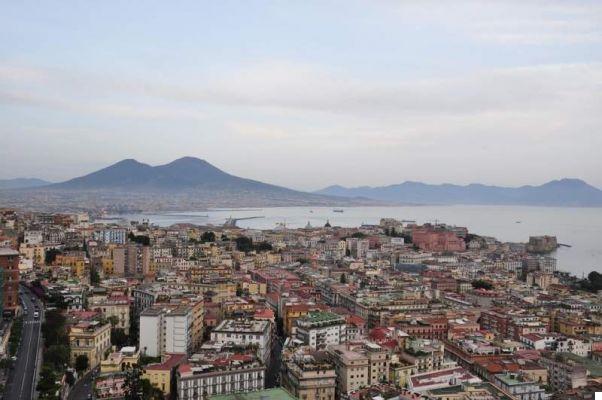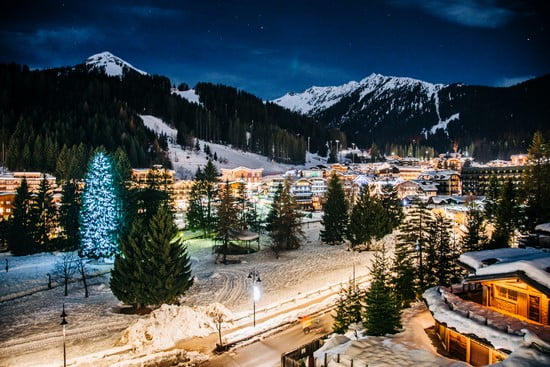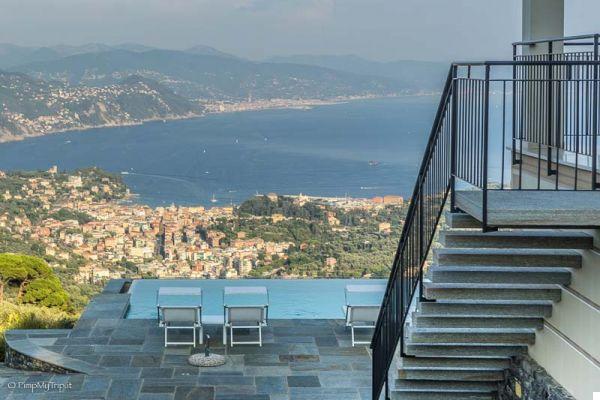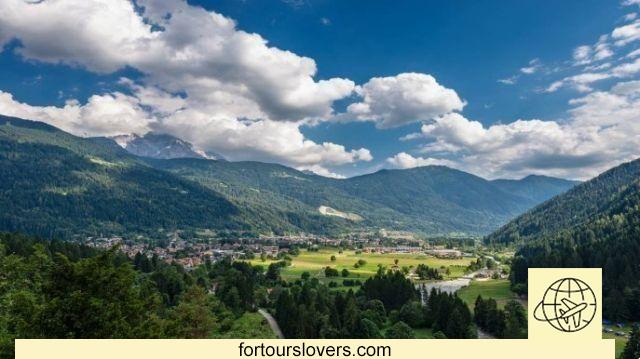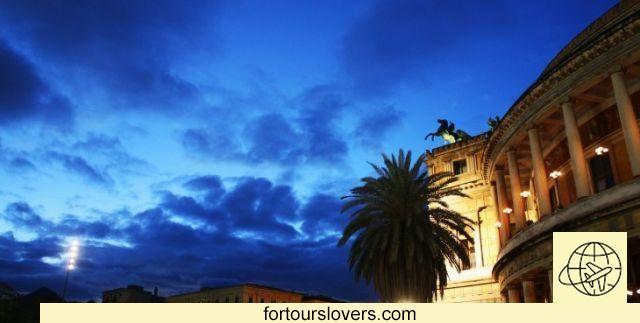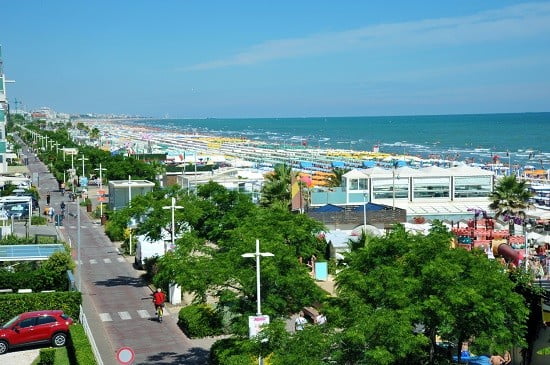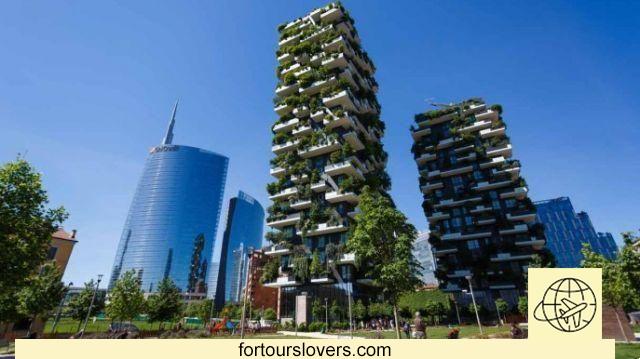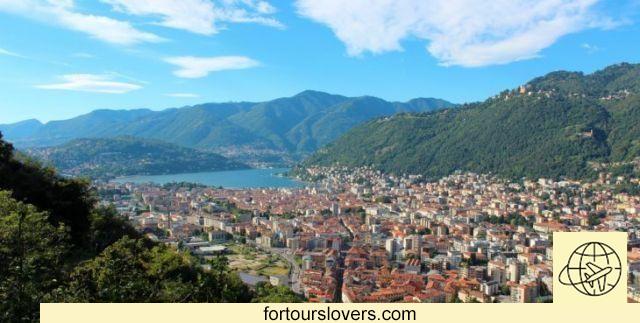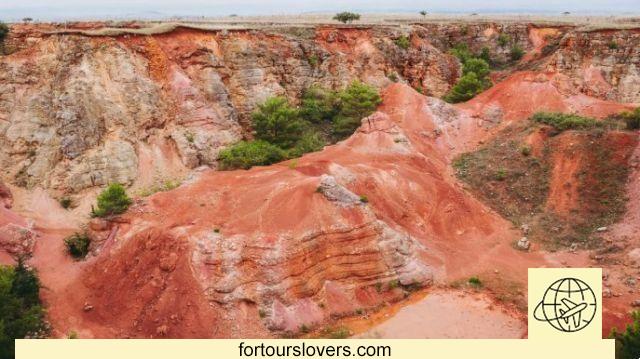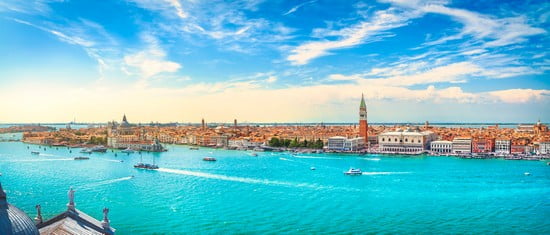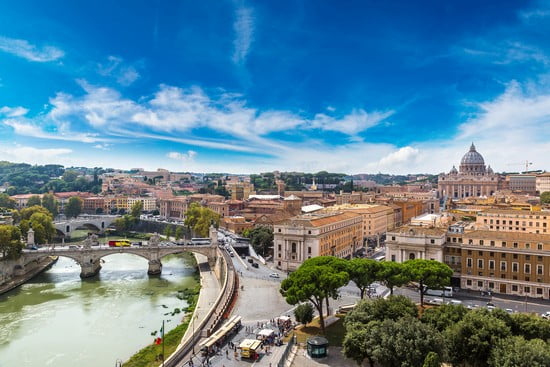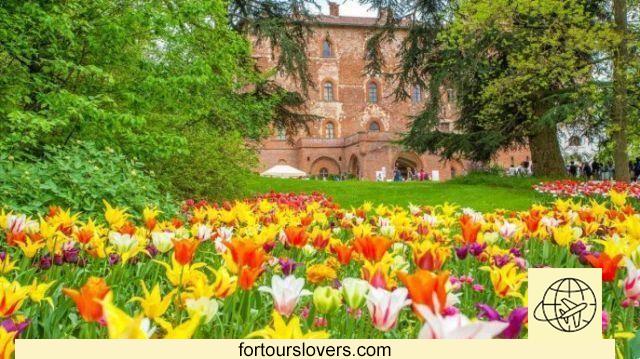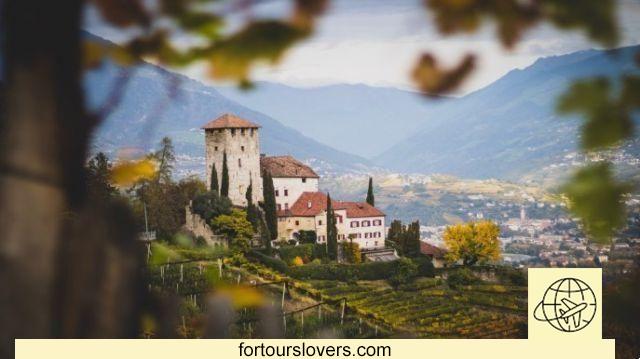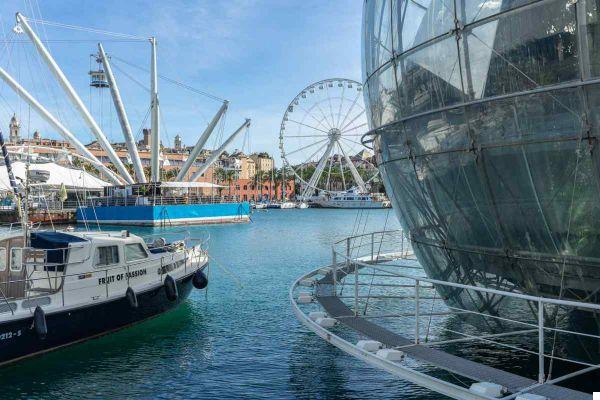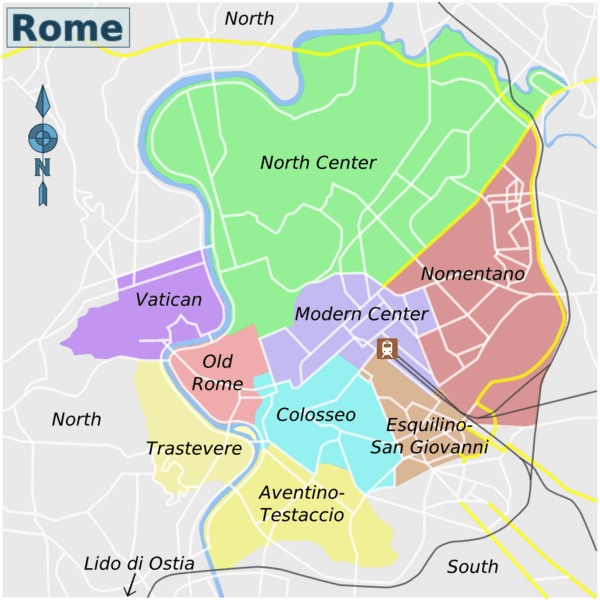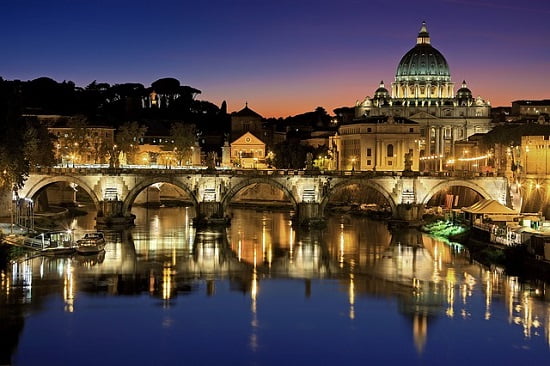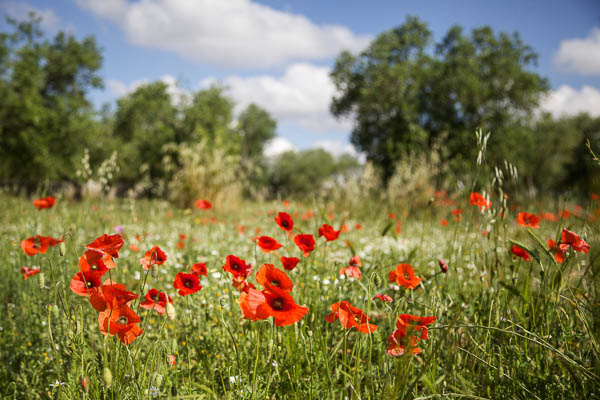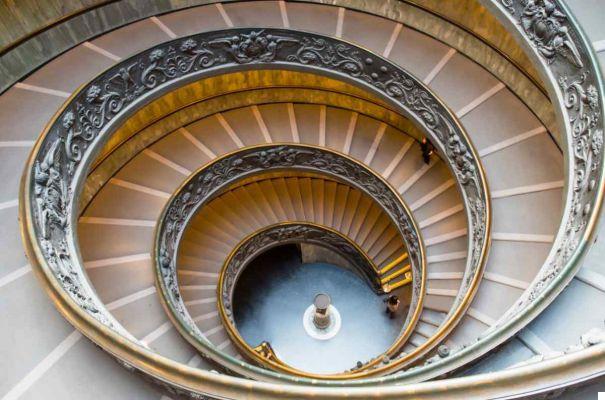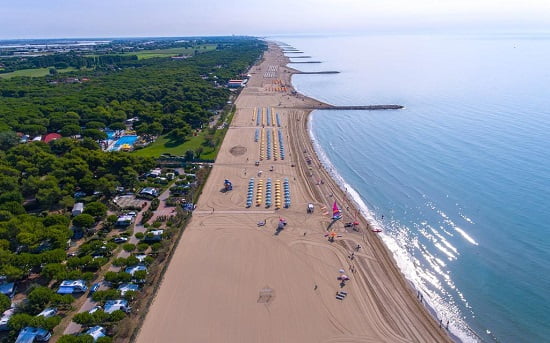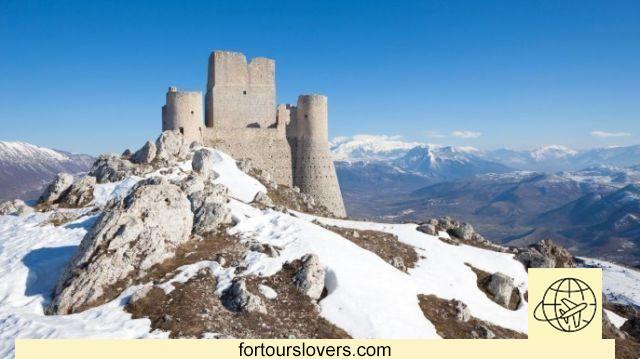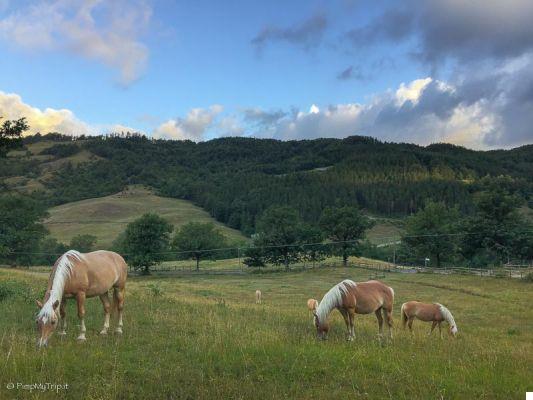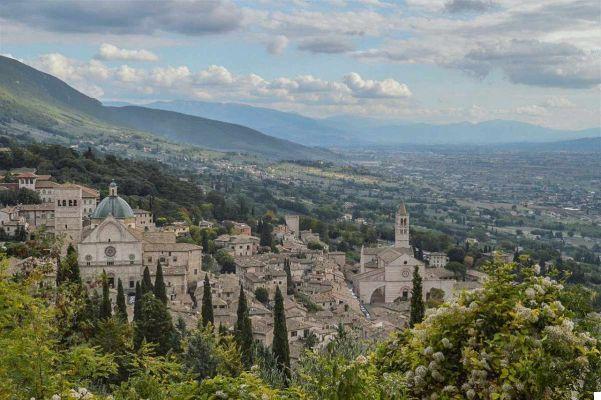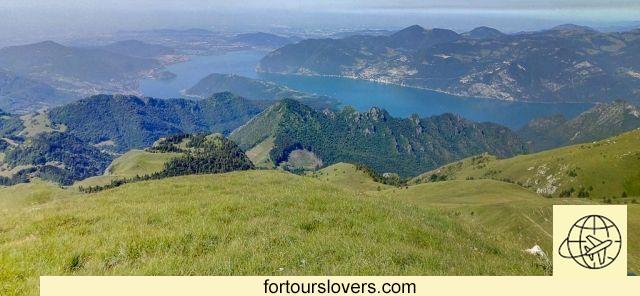
What to see on Lake Iseo?
With this article I want to list you a series of things to see around Lake Iseo, looking at the map, a sort of counterclockwise turn that will take you first to discover the Brescia side and then the Bergamo side. Lake Iseo and the Oglio river form a natural border between the two provinces of Brescia and Bergamo.
Lake Iseo is very visited by the Dutch and Northern Europeans in general, tourists who like the lake and camping life. There are several campsites in these areas, so even campers will find suitable tourist facilities.
Where to sleep on Lake Iseo - Solution 1
If you want to appreciate the lake and enjoy the lake view when you wake up in the morning, well there is no better way than sleeping on its banks. ->
Where to sleep on Lake Iseo - Solution 2
If, on the other hand, you want something more particular, surrounded by greenery a few kilometers from the lake, I suggest you sleep in Franciacorta.
-> .
1 - Montisola: the largest lake island in Europe
How not to start with the icon of Lake Iseo: Montisola or Monte Isola.
Obviously it is outside the counterclockwise turn I was talking about a few lines above. Montisola needs at least half a day, a full day if you want to travel far and wide and maybe reach the Madonna della Ceriola on the top of the mountain. A weekend if you want to enjoy the calm and relaxation.
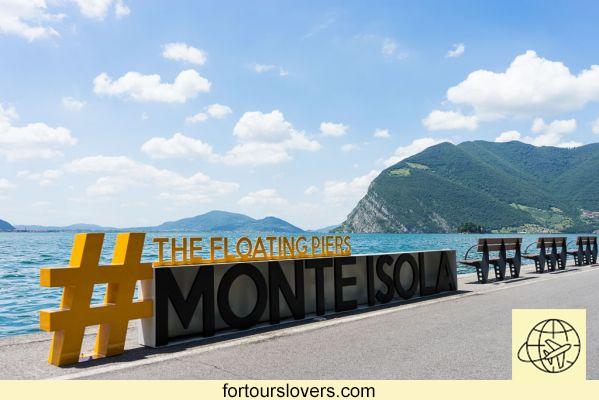
Of Montisola I have told you about it in a very thorough and complete way in my article: How to get there and what to see in Monte Isola.
It is a real excursion that can keep you busy for the whole day, especially if you visit it in the summer and maybe you want to take a few minutes lying on its beaches contemplating the calm waters of the lake.
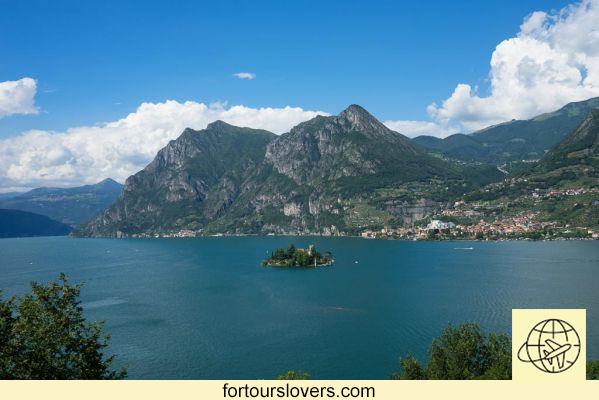
You can reach Montisola from the various ports both on the Bergamo side and on the Brescia side. Brescia side the routes are Sale Marasino -> Carzano and Sulzano -> Peschiera Maraglio. I recommend this last one because you will arrive in the most important inhabited center of the island.
2 - Franciacorta and its wine cellars
How not to start an itinerary in the surroundings of Lake Iseo if not visiting the beautiful Franciacorta and perhaps tasting a good glass of bubbles.
Discover also: What to see in Franciacorta, 10 stops in the land of bubbles!
The Franciacorta area is dotted with vineyards and wine cellars. Almost all of them allow you to make tastings, discover their history and more generally the history of Franciacorta and its production which in recent years is increasingly turning towards organic.
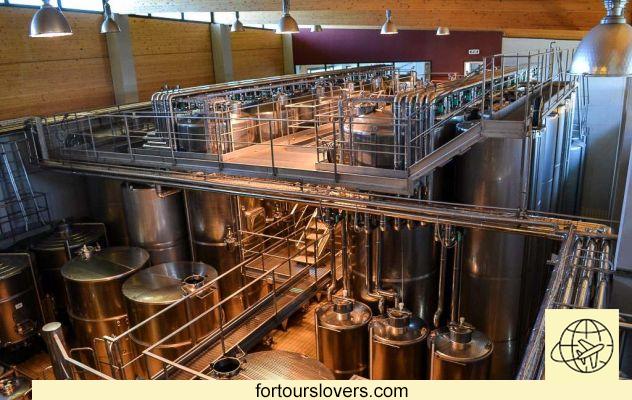
If you want the list of wineries with timetables and tastings -> click here for the cellars
If you are interested in reading an in-depth study on the production of Franciacorta wine I leave you the link to one of my articles: Franciacorta: visit to the organic wine cellar of Barone Pizzini
However, Franciacorta is not just wine, it is also a wonderful area for outdoor walks, paths through the vineyards and many possibilities to have fun on mountain bike.
3 - The Sebino peat bogs
A protected area, a nature reserve where you can walk in the midst of nature or have fun doing bird watching e nature photography. These are the Torbiere del Sebino, a marshy area that was formed thanks to the retreat of the waters of Lake Iseo up to the current borders. The peat bogs of Sebino, thanks to the formation of peat, also became very important from an economic-industrial point of view as peat was used instead of coal to power trains on the Brescia -> Edolo railway line.
I recommend the peat bogs of Lake Iseo to those who love photography and contact with nature. A suggestive environment which offers different panoramas according to the seasons.
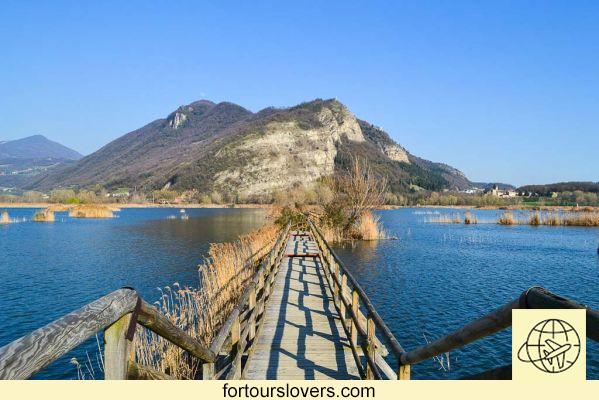
There are several routes to do within the nature reserve and you can consult them here: paths of the Sebino peat bogs.
For the sake of completeness, I inform you that, although there are no turnstiles or controllers, the cost of entry to the peat bogs is 1 euro and you can find the automatic machine at each entry point to the reserve.
Near an entrance to the peat bogs (see map) there is the Monastery of San Pietro in Lamosa.
4 - Visit the San Pietro in Lamosa Monastery
We can say that our real itinerary around Lake Iseo begins with a visit to the peat bogs. The Monastery of San Pietro in Lamosa is also located near the nature reserve.
More information about the Monastery can be found here:
- Visit Lake Iseo - Monastery of San Pietro in Lamosa.
5 - Take the Antica via Valeriana
Between Lake Iseo and Valle Camonica there are several testimonies of the Roman period, just think of the Sanctuary of Minerva at the gates of Breno and at the Theater and Amphitheater in Cividate Camuno. But the Roman testimonies are not just buildings. Between Pilzone d'Iseo (a fraction of Iseo just before Sulzano) and Pisogne winds the ancient road which until 1850 was the only link between Brescia and the Camonica Valley. A small cobbled street which crosses the hills on the Brescia side of Lake Iseo, giving those who travel it wonderful views.
If you love trekking or active tourism in general, theAncient Via Valeriana is the perfect solution to combine sporting activity with the discovery of the territory. 25/30 km marked by a yellow and brown V.
To deepen the entire path I recommend reading this article.
6 - A walk through the center of Iseo
The name of the lake is linked to the town of Iseo, one of the most populated towns among those bordering the lake. A beautiful center with Piazza Garibaldi, a beautiful lakefront with many bars where you can relax with a drink overlooking the lake and, in addition, many shops where you can go shopping, if it is of your interest.
Iseo is perfect for passing a few carefree hours. Ferries also depart from its pier to take tourists to discover the lake.
In mid-August they also have a fireworks show on the lake: not to be missed!
7 - Trekking on Monte Guglielmo with a view of Lake Iseo
Il Monte Guglielmo o Glem (known by the people of Brescia with its name in dialect) certainly represents the "surroundings of Lake Iseo" ... it is not possible to insert it within the classic tour around the lake because it is a trek that, although it is not very demanding, requires more than half day. I really recommend it if you want to see the view across the lake, Montisola and the Adamello, hoping for good weather.

The top, on which the statue of the Redeemer is present, is about 1950 meters above sea level and there are several more or less long paths to reach it.
You can take the path that starts:
- From the town of Zone passing through the wood of the gnomes, the start of the route is near the pro loco di Zone -> about 3 hours of walking and 1000/1100 meters of altitude.
- From the hamlet of Passabocche to Pisogne -> about 2 and a half hours of walking and 700 meters of altitude.
- From the Croce di Marone -> about 2 hours of walking and 800/850 meters in altitude. Croce di Marone can be reached by car by taking a very steep road before the village of Zone. On the map you can find the route starting from Iseo.
8 - The pyramids of Zone
Have you ever seen pyramids made entirely of rock? At Zone you will find just that!
Le pyramids of Zone, also called stone fairies, are inserted within an area declared a nature reserve. Rock pyramids on the top of which there are boulders. It seems unreal but when a boulder falls, the pyramid crumbles to form a new one.
For more information, I invite you to read the post: Visit the Natural Reserve of the Pyramids of Zone.
9 - Visit the Church of Santa Maria della Neve in Pisogne
It may seem strange too, but a few steps from Lake Iseo, at the beginning of the Camonica Valley, it is possible to visit what Giovanni Tentori defined as the "Sistine Chapel of the Poor". The Brescia painter "Romanino" he painted the vault, the arch, the walls and the facade. It is a small church, perhaps a little bare and humble, but inside you will remain "nose up" for a long time.
10 - The Moro Lake near Darfo Boario Terme
This stage is slightly distant, the Moro Lake is located in Darfo and, especially in summer, represents a valid alternative to Lake Iseo. It is nestled between the first mountains of the Camonica Valley and can be reached via two roads. I recommend that you take the one that starts from Darfo and not the one from Angolo Terme.
You can sunbathe near the kiosk, or jump into the water from the jetty or rent a rowboat and explore the lake.
Darfo Boario Terme, as its name suggests, is also known for its thermal baths.
11 - The park of Luine and the rock engravings in Naquane
The history of Valle Camonica, as well as having been marked by the Romans, is famous for rock carvings. The greatest number of histories is found in the Capo di Ponte area with the Naquane National Park of Rock Engravings (UNESCO heritage) and other important sites. You walk in the middle of nature through paths that lead to the discovery of engravings. Each rock is described on the various explanatory signs.
The park of Luine and Monticolo is instead located near Lake Moro not far from Darfo Boario. Here too you will find a path between the rocks. The park is very well kept and, if you are interested in the Camunian history, it certainly represents an excellent detour around Lake Iseo.
Mine is only a small and superficial description of what the Camunian historiations are, for more information I invite you to read this article of mine:
Rock engravings in Valle Camonica: discovering history
12 - Discovering Lovere, north of Lake Iseo
Let's go back to the itinerary on Lake Iseo, the next stop is Lovere in the province of Bergamo. Lovere was included in the collection of the most beautiful villages in Italy. In addition to a beautiful lakefront, you can visit the Basilica of Santa Maria in Valvendra, the Accademia Tadini gallery and the Civic Tower.
14 - Sarnico and Paratico
Sarnico and Paratico contain the "end of Lake Iseo". The first is a town from Bergamo, the second from Brescia. I'm separated by a small bridge but the two city centers, although from different countries, appear to be from the same country. In my opinion it is a very beautiful point of the lake and the best time to visit it is at the end of July with the Sarnico Busker Festival, when Sarnico is invaded by street artists who find themselves in 3 days of celebration animating the whole town.
15 - Montisola salami and Spongada
This is not a stage of the itinerary itself but it is a culinary stop that you certainly cannot get lost in a ride on Lake Iseo.
Montisola is renowned for its salami, a sausage that has less fat than traditional salami, it is not minced meat but meat strictly cut with a knife. The salami is lightly smoked with olive twigs, bay leaves and juniper berries. The real Montisola salami must be produced only on Montisola!
Another typical product is the spongada that you can find on the same Montisola or throughout the Camonica Valley. The spongada recalls the idea of a huge sweet bread with lots of butter and granulated sugar. Know that it is addictive. Once you've eaten your first bite, it's hard not to finish the whole loaf.
Are you visiting Lake Iseo? You may also be interested in:
- What to see in Brescia, my city!
- Brescia Castle and the lioness of Italy: great pride!




